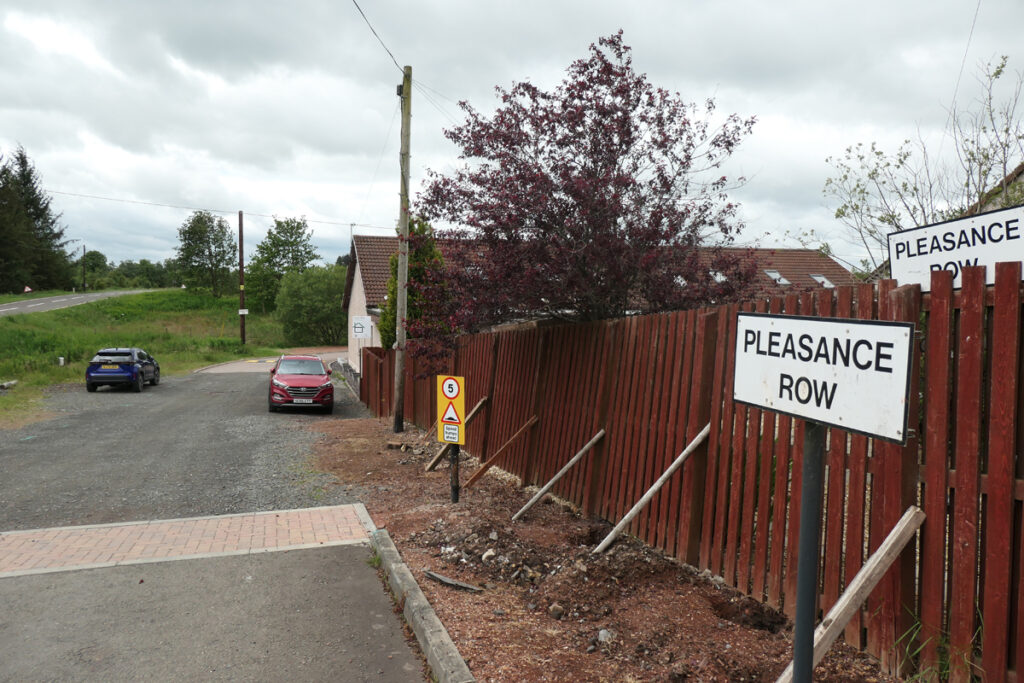According to the Oxford English dictionary, a “pleasance” is a secluded part of a garden often laid out with trees, where one might promenade at one’s leisure. It’s hard to see how such a description could reasonably be applied to a row of miner’s cottages, now set among bogs, bings, and conifer plantations, a couple of miles north of the village of Forth.
The first cottages were built here in about 1800 to house ironworkers and miners employed by the famous Wilsontown ironworks. Set beside a small burn, Pleasance Row was a little more distant from the furnaces than other ironworker’s houses, so the fire and clamour of iron production would only be seen as a glow on the skyline rather than an ever-present neighbour. Hardy a pleasance, but perhaps a little less unpleasant than the rest of Wilsontown? Or perhaps it was just an ironic nickname that stuck?
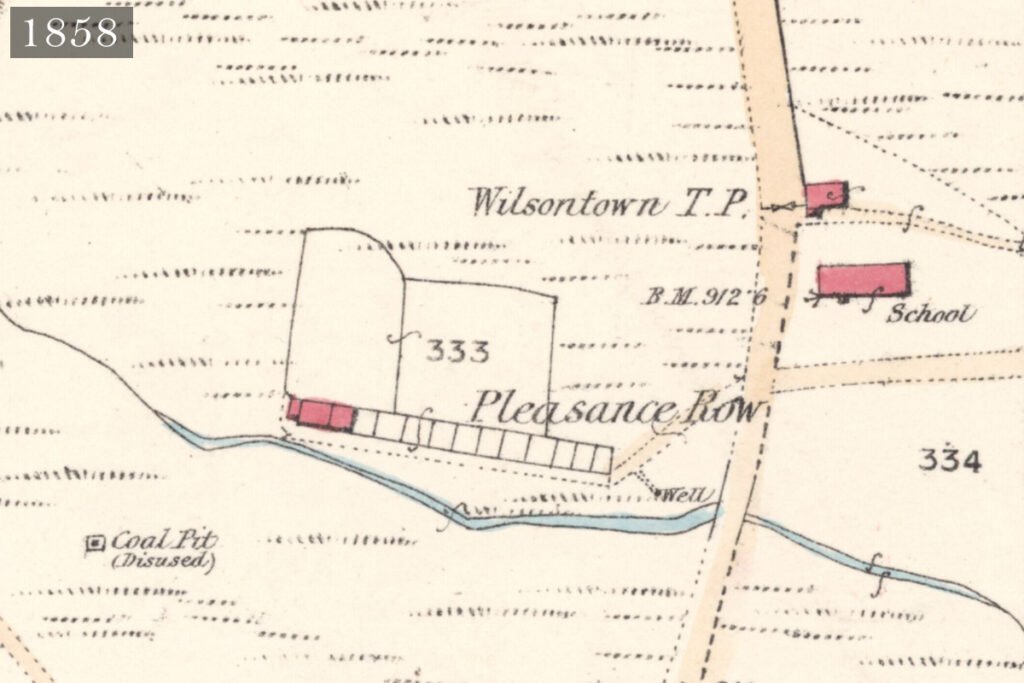

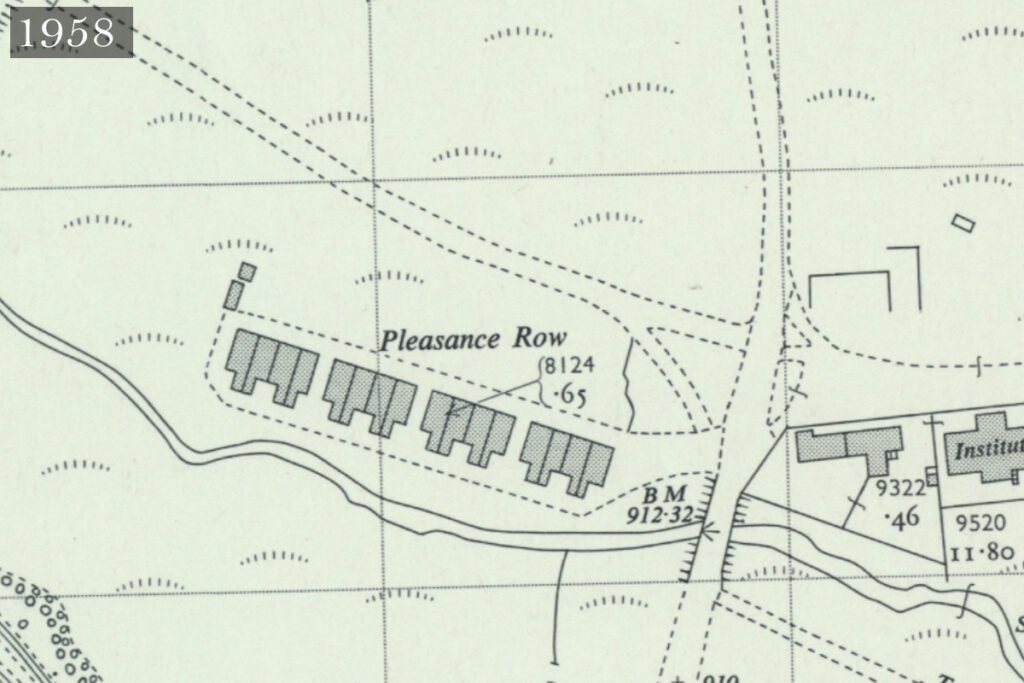

The Wilsontown ironworks had a troubled history. The Wilson brothers began construction of the works in 1779, but faced many difficulties and the business finally collapsed in 1812. No buyers were found at that time, and the ironworks and associated housing fell derelict. Wilsontown was eventually bought by Glasgow ironmaster William Dixon, who restarted the ironworks in 1822 and continued iron production there for a further twenty years. Operating on a smaller scale than the old company, Dixon’s had no need to restore much of the derelict housing. The 1859 OS map shows Wilsontown as a ghost town after the ironworks had been dismantled and most mining had ceased, leaving most of the village, once home to over a thousand, as lifeless rows of roofless ruins.
Pleasance Row is shown on this map as a long row of twelve single-room dwellings, with a slightly larger structure at one end which might have been a store or office. Only two of these houses continued to be inhabited in 1859; the rest lay derelict and roofless..
The fortunes of the area improved once a branch of the Caledonian Railway reached Wilsontown in 1860, encouraging an expansion of coal mining. Wm. Dixon & Co sunk new pits to rich seams of coking coal in an area to the north east of the old ironworks and, in 1875, built a bank of coke ovens at their No.3 pit, fairly close to the old Pleasance Row. Shortly afterwards Dixons cleared any remaining ruins of the row and built four new blocks on their site, each containing four two-room apartments.

View from the A706 looking west in about 1910, before scullery extensions were added to the rows. The distant chimneys are probably those of Dixon’s No.3 pit and coke ovens and, next to the white cottage, a number of wagons stand on sidings beside the branch serving No.3 pit. Laundry dries nicely on the greens beside the burn, and the large wooden barrels beside the entrance to each house may have stored the rainwater used for the washing.
The sixteen solid stone-built houses of this new Pleasance Row provided comfortable homes for almost a hundred men, women and children. Water supply was a problem however, with drinking water supplied from a spring in the glen that fed sinks placed at the front of the houses, each shared by two neighbours. Rainwater was also collected in water butts for washing and cleaning purposes. Dry privy middens were provided, the three brick-built outbuildings each equipped with six seats, and thoughtfully fitted with doors. There were no communal wash-houses, although coal cellars were provided and each home had their own garden for the cultivation of vegetables.
Modern amenities finally reached Pleasance Row in about 1926, when Dixons built scullery extensions, providing each home with washing facilities and an indoor toilet.

View of the row looking north east, pictured some time after 1926, when scullery extensions were added to bring modern conveniences into the lives of the residents. The roofs of the school and the store can be glimpsed above the roofline of the rows. The track in the foreground is rather a puzzle; it appears to be an overgrown railway siding but might simply be wheel tracks worn through the grass. The substantial earthworks and well constructed bridge that survive along this route suggest this might be the course of an early tramway, however nothing is shown on available maps
The row continued to provide solid homes for generations of working folk, but by the end of the 20th century had fallen into a poor condition, with the large gardens of some homes used informally as business premises. Thankfully a wholesale renovation of the row then took place, in some cases knocking two homes into one, and Pleasance Row is now once again a most pleasant place to live.
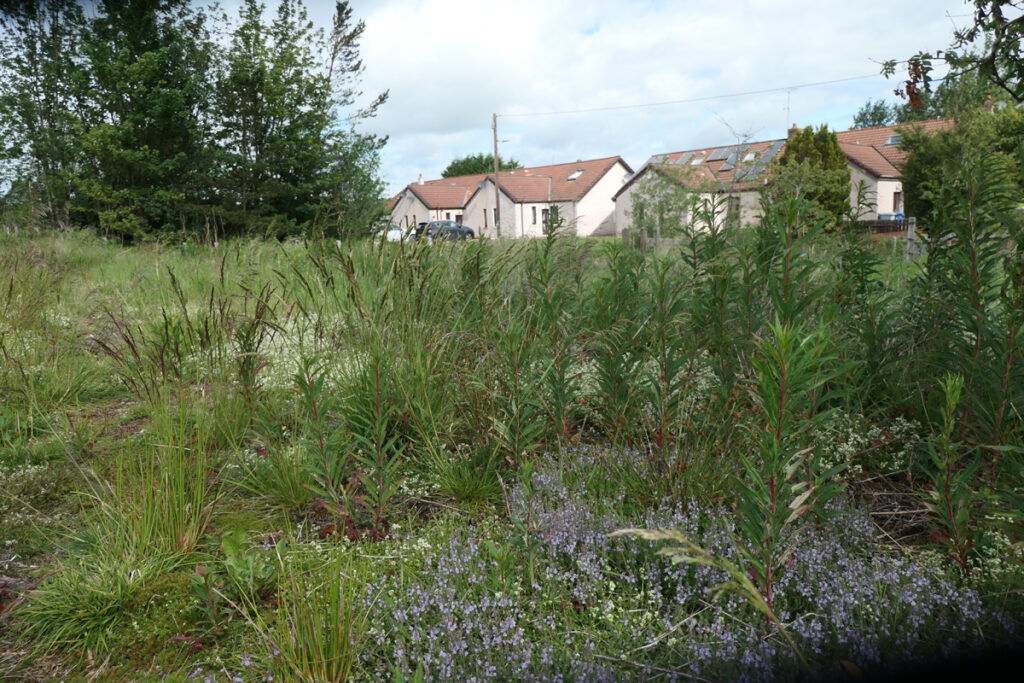
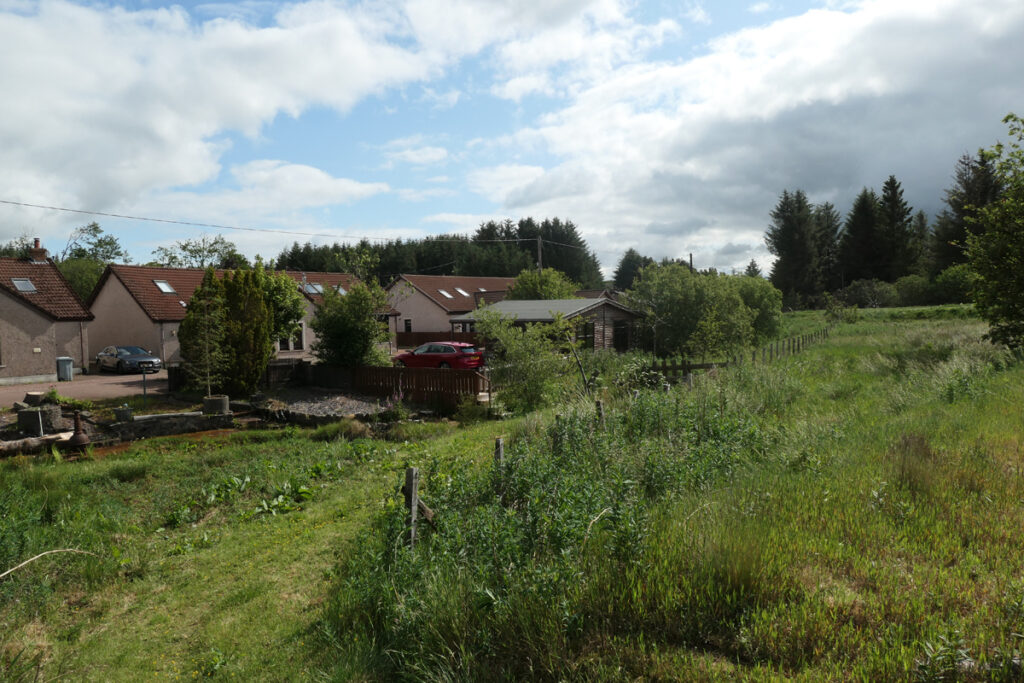
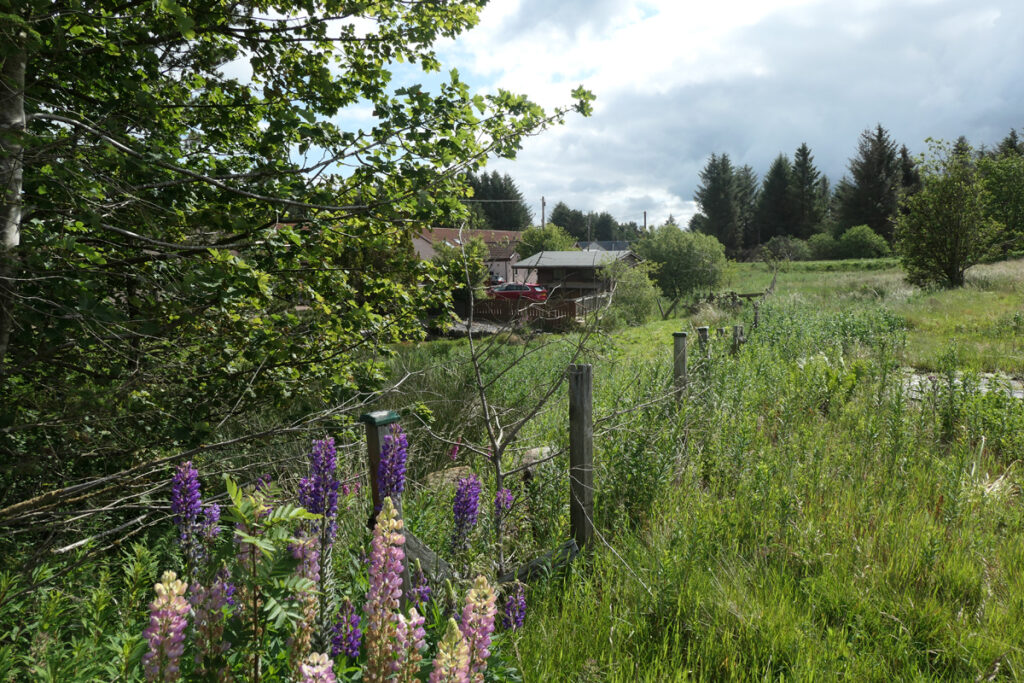
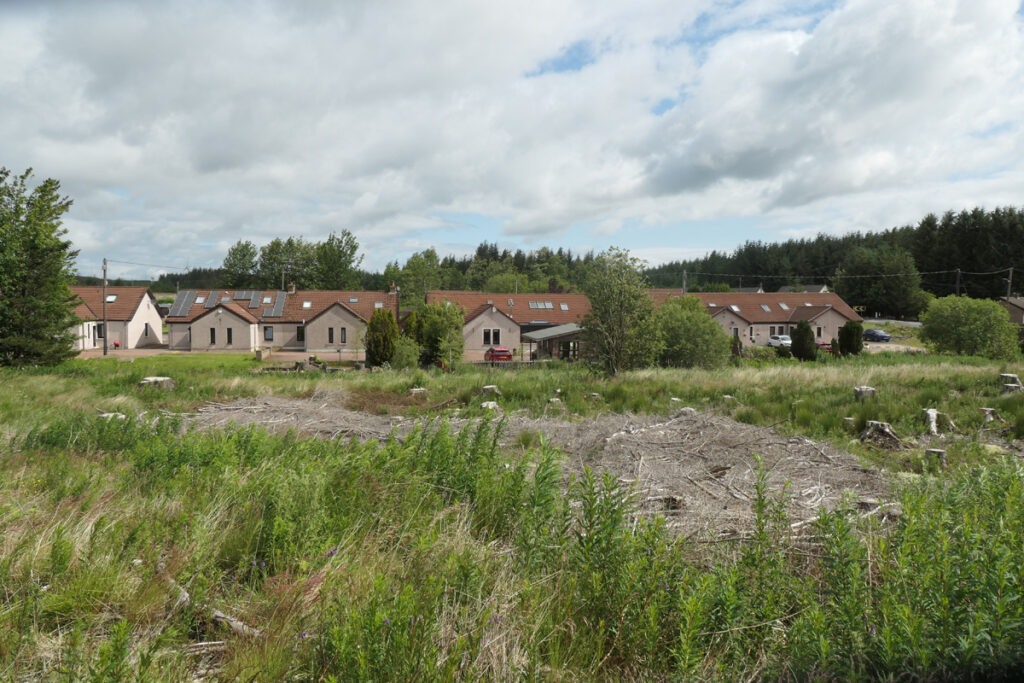
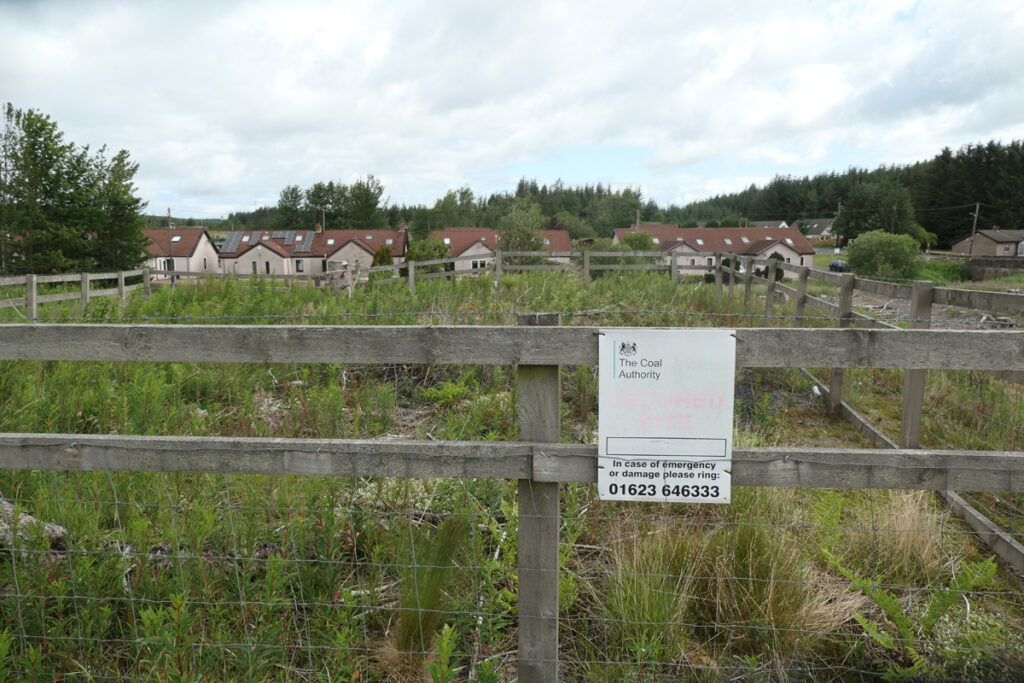
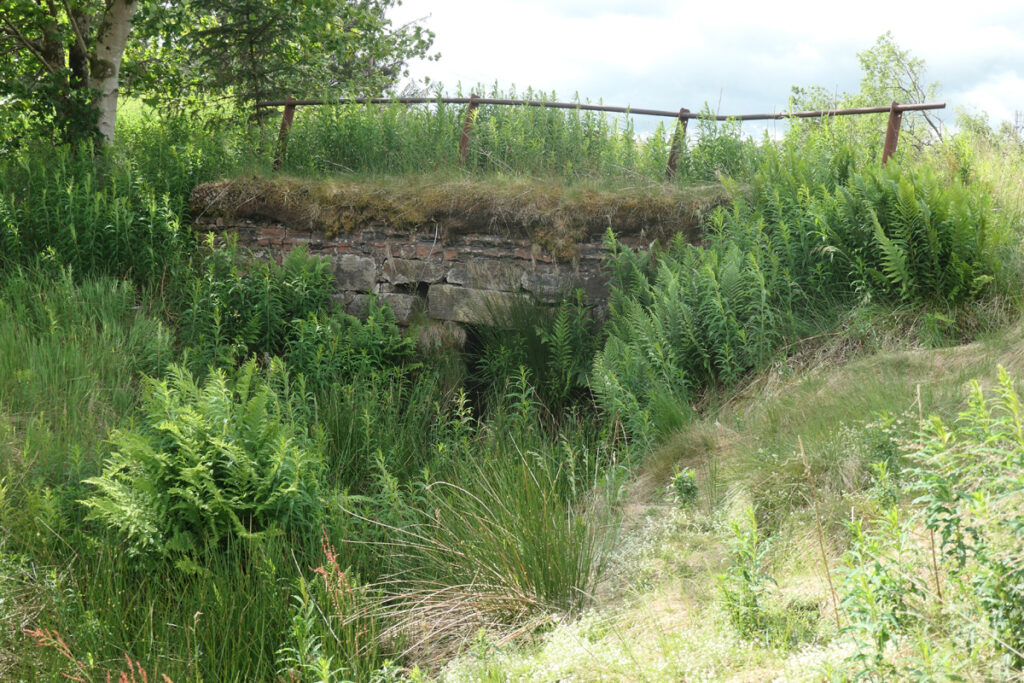
Photos of the row, taken from the south in July 2025, a mineshaft from the ironworks era has been made safe by the Coal Authority, and a bridge carrying the trackway or tramway, south of the rows

